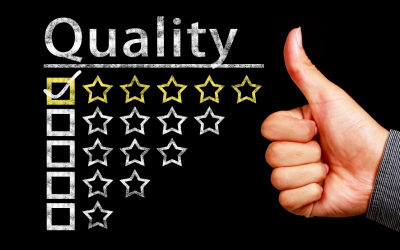U.S. women have flown in space, led industrial giants, and have received a major party nomination for president. There’s more in store for women in 2019. Pew Research has published news of first quarter projections indicating that the number of adult college educated women in the U.S. workforce will be greater than college educated men for the first time: approximately 29.5 million women versus 29.3 million men.
It has been almost 40 years since women were first awarded more bachelor’s degrees from U.S. institutions than men in a single academic year. That was 1981-82. It took until 2007 for the total number of adult college educated women in the population to exceed men.
This is significant for a few reasons.
To begin, there is a well known correlation between education and earnings. College educated women in the U.S. workforce will have more financial independence and discretionary income. Another is the increased likelihood of rising through the organizational ranks. Educational credentials most often go hand in hand with being on a leadership track. In addition, college educated women are better positioned for high level roles in government and academia.
Though the sheer numbers are clear, participation across the board by industry is uneven. According to the Pew report women show stark underrepresentation in computer related and engineering occupations. In contrast, more college educated women than men hold positions in office and administrative support and as health care practitioners and technicians.
A Pew Research report of women in leadership positions underscores how well educated and well qualified women have not attained parity with their male peers, though inroads have been made. For example:
- In 1995 exactly 0.0% of Fortune 500 CEOs were women. In 2017, 6.4% – 32 – were women.
- In 1995 9.8% of Fortune 500 board members were women. That number more than doubled by 2017 to 22.2%.
- In 1986, 9.5% of College and University Presidents were women. By 2018 that rose to 30.1%.
At the upper echelons, things are changing slowly, but they are bound to improve as the number of college educated women in the workforce continues to rise. The Harvard Business Review published a discussion of the assumptions surrounding the “differences” between men and women in the workplace. Insofar as it pertains to their capabilities, propensities, and effectiveness such notions have been persuasively challenged.
For B2B direct marketers, success requires connecting with college educated women in the workforce. Messaging must not only be gender appropriate, but position-aware. College educated women in the U.S. run the gamut from fresh hires to CEOs.
Targeting and reaching this growing universe of well educated, striving women represents an opportunity to speak in a more relevant voice to fresh ears. In 2019 and beyond it is just good business for direct marketers – any marketers – to resonate with highly educated women as their role in the business decision making process expands.
There are numerous databases designed to identify women in business with great accuracy. Dun & Bradstreet offers Women Owned Businesses, as well as Executives By Title with gender selections. That said, college educated women in the workplace are mothers, heads of households and as such, consumers. Communicating with them in the context of their total work/lives makes sense, and sales.




